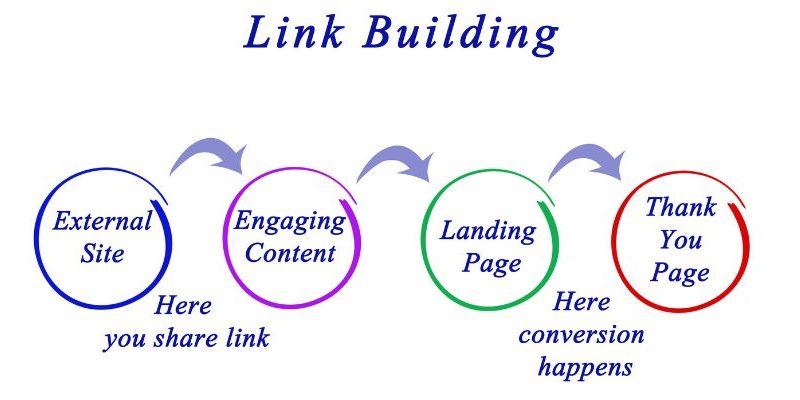Any website’s success in the realm of digital marketing depends on the smart use of links, both internal and external. Knowing the differences between internal and external linking can greatly improve SEO efforts and increase targeted traffic for e-commerce platforms. Pristine Connections specializes in click wise design to create a seamless user experience and improving internal linking on E-commerce websites. This article examines the key distinctions between internal and external linking, as well as the advantages and practical applications of each.
Understanding Internal Linking
Definition and Benefits
Internal linking refers to the practice of creating links that connect one page of a website to another page within the same website. These links are crucial for improving site architecture, enhancing the SEO performance by spreading link equity, and helping users navigate your website more effectively. For e-commerce websites, internal linking can guide customers through a logical path from product discovery to purchase, increasing the chances of conversion.
Best Practices for E-commerce Websites
E-commerce websites internal linking should focus on creating a logical flow that supports the customer journey. This includes linking from high-traffic pages to high-value product pages, using descriptive anchor texts, and ensuring that every product is reachable through internal links. Click wise design ensures that links are placed where users intuitively expect them, enhancing usability and engagement.
Common Mistakes to Avoid
One of the biggest mistakes in e-commerce websites’ internal linking is creating too many links that lead to irrelevant pages, which can confuse users and dilute the SEO value of important pages. Another error is neglecting the maintenance of internal links, leading to broken links that harm user experience and SEO rankings.
Exploring External Linking
Definition and Benefits
External linking occurs when a website links out to different domains. These links are essential for building credibility and authority, as they can signal to search engines that your content is well-researched and valuable. For e-commerce sites, external linking can also involve partnerships or linking to manufacturers’ pages, which can enhance user trust and product validation.
Impact on SEO and Authority
While external links send users away from your site, they can positively impact your site’s authority when used judiciously. Linking to reputable and relevant sources can improve your content’s trustworthiness and relevance in the eyes of search engines, potentially boosting your own domain’s authority and rankings.
Best Practices and Considerations
When incorporating external links, ensure that they open in new tabs to keep your site open in the user’s browser. Also, regularly check the quality and relevance of external sites you link to, as linking to low-quality sites can harm your reputation and SEO.
Comparing Internal and External Links
Role in SEO Strategy
E-commerce websites’ internal linking primarily serves to optimize site structure and user navigation, which directly influences search engine rankings and site usability. External linking, while also beneficial to SEO, serves more to enhance content validity and authority.
Influence on User Experience
Internal linking strategies, especially those enhanced by click wise design, directly affect how users interact with your site and their overall experience. External links provide additional resources for users but require careful usage to not detract from the primary goal of keeping users engaged with your content.
Integration and Balance
The best digital marketing strategies find a balance between using both internal and external links. It’s crucial to integrate them in a way that optimizes user experience and maximizes SEO benefits without overshadowing one type with the other.
Final Wordings
At Pristine Connections, we understand that mastering both internal and external linking is key to creating a successful online presence, especially for e-commerce platforms. By leveraging both E-commerce websites’ internal linking for enhanced site navigation and click-wise design for user engagement, alongside thoughtful external linking to build authority, your website can achieve superior SEO performance and provide a better user experience. Explore our services to see how we can help you refine your linking strategies and grow your online business.
FAQ’s
Internal linking involves placing links on one page of your website that lead to other pages within the same website. This practice helps improve navigation for users, enhances SEO by distributing page authority across your site, and helps search engines index your pages more effectively.
External linking occurs when your website includes links that lead to other websites. This is important for establishing credibility and authority, as linking out to relevant and reputable sources can improve the trustworthiness of your own site and support the information provided.
Internal linking strengthens the keyword relevance of a page by using appropriate anchor text, improves the likelihood of pages being indexed by creating a network of links, and increases page views and user engagement by providing visitors with more navigation options.
While external linking can offer many benefits, it also poses risks if not handled properly. Linking to low-quality or irrelevant sites can damage your site’s reputation and SEO. Always ensure the external sites are reputable and directly relevant to your content.
Yes, strategic internal linking can significantly enhance the user experience by making it easier for visitors to find relevant information and navigate your site effectively. Poor internal linking, however, such as broken links or overly complex navigation, can frustrate users and lead to higher bounce rates.







